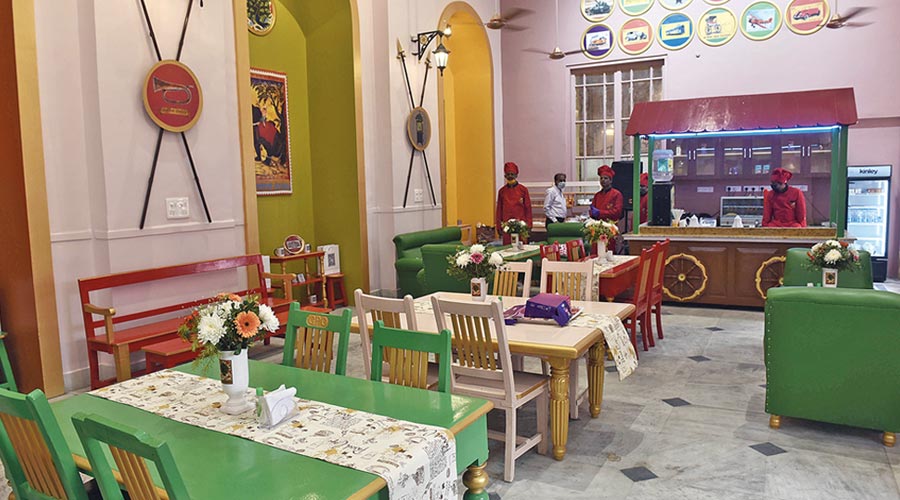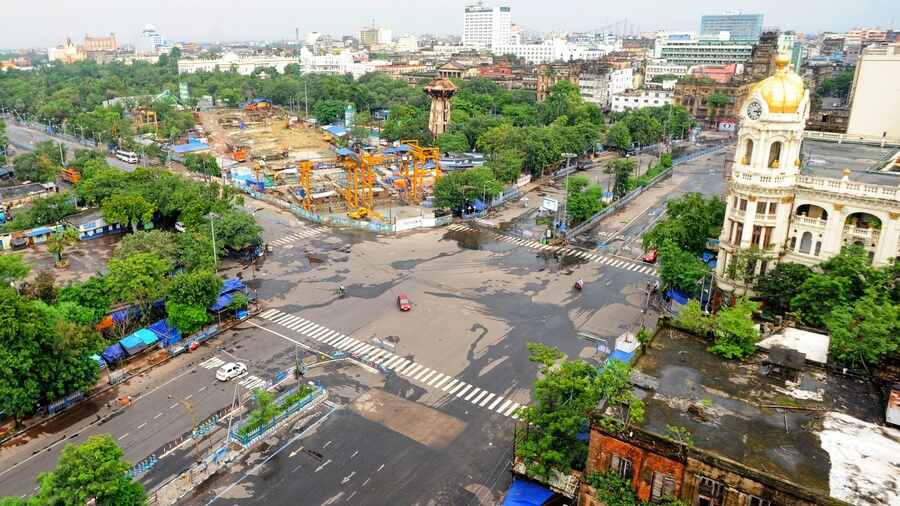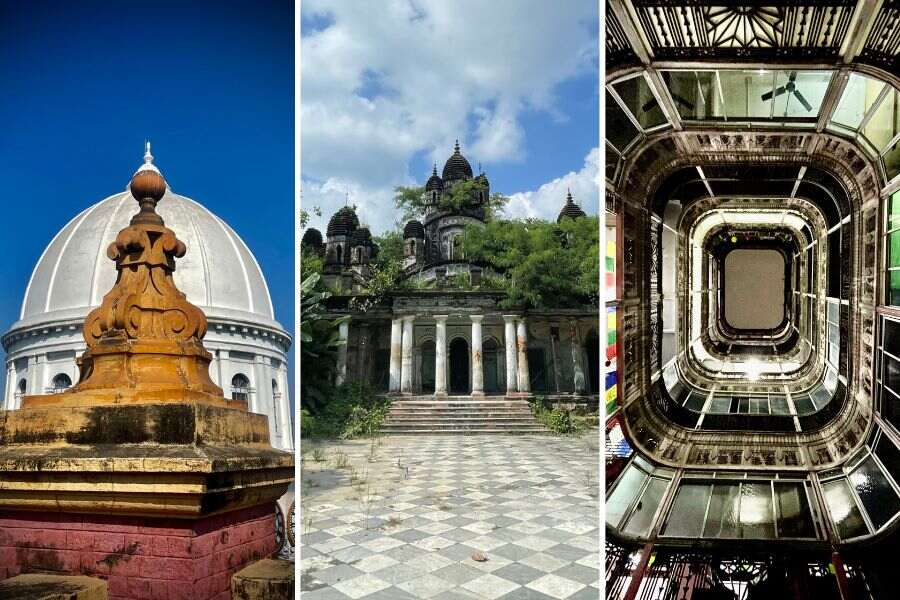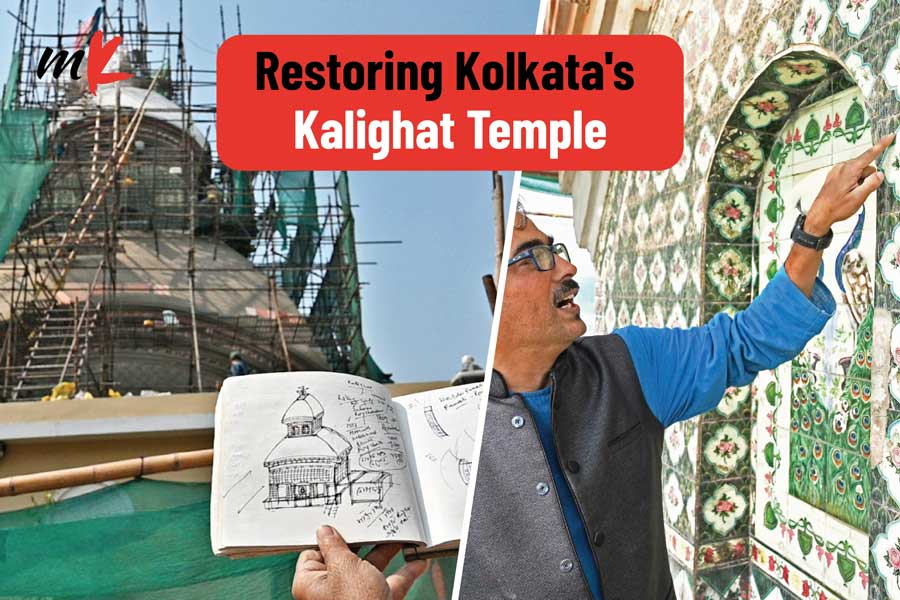Calcutta GPO is a living testimony and not a mere edifice. It is a modified form of the first post office that Warren Hastings established in 1774 and bears every single chapter of the Indian postal system in the last 250 years.
The Background
With its convincing victories in two back-to-back battles, one at Plassey in 1757 and the other at Buxar in 1764, the British East India Company cemented its position as the strongest controller of India’s political and social affairs for the next two centuries.
From 1765 with the inking of the Allahabad Treaty, the company won the right to collect tax on behalf of a crumbling Mughal empire and after that it practically became the ruler of a large part of India with its base at Calcutta.
Soon the sheer imperialistic attitude of the British motivated them to develop a strong communication system for smooth mobility of men, army, machine, war materials, documents and lastly, money. This was the time English officers of the East India Company, for their own interest, started developing the logistics infrastructure of a system through which could move all their important company documents and money safely and quickly.
Cut to the present-day
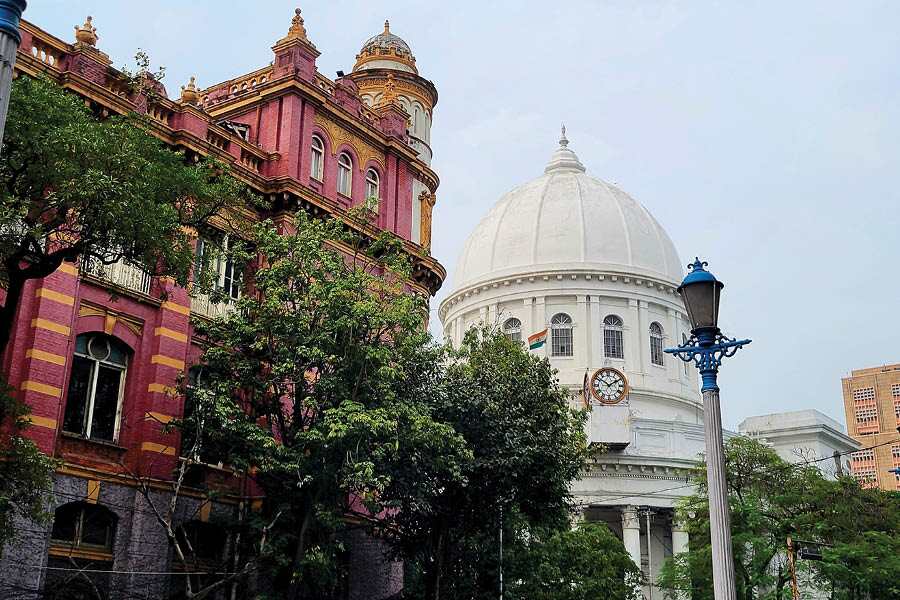
The grand dome of the GPO was built in 1868
Today, more than two centuries after all those political gambits, the grand edifice of Calcutta GPO building that still rules the skyline of Dalhousie Square since 1866 stands like a silent sentinel of an era that witnessed and evolved with a huge emergence of time.
The huge dome and long promenade decorated with rows of marvellous Corinthian pillars silently tell us history which is pregnant with matchless milestones of human efforts that made communication faster and significant. The 250-year history of Calcutta GPO in a nutshell is nothing less than the history of postal system development of Asia.
The need for communication
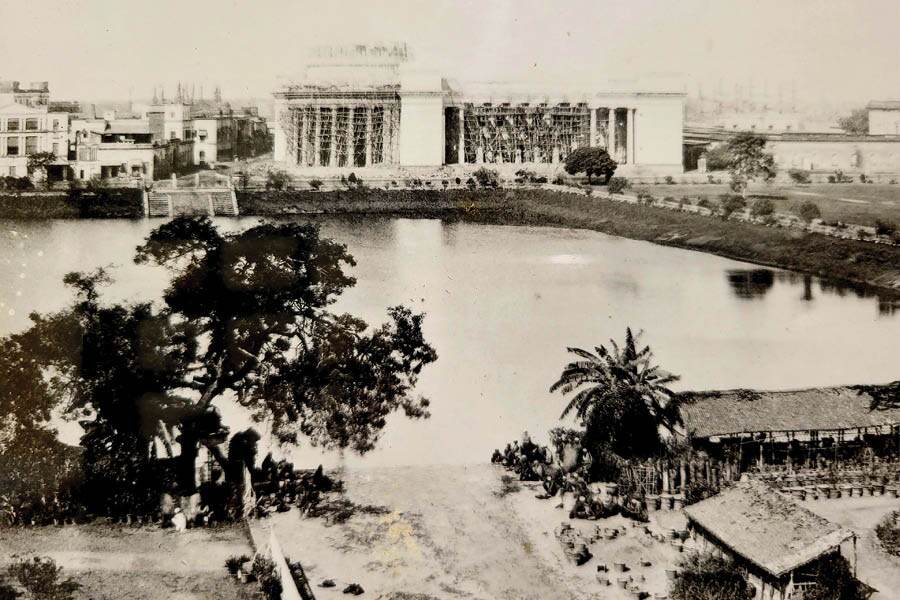
The GPO without its central dome sometime near 1868 Courtesy: British Library collections
Robert Clive, the first Governor-General of India, realised the need better than anyone and under him, from 1766, a postal system was slowly started to exchange letters among British citizens in Calcutta. So an imperial need of a foreign multi-national company in 1766 gave birth to an infrastructure which we now call Indian postal system, one of the biggest postal networks in the world. It is assumed that before it a small post office was set up in Calcutta in 1727 somewhere near the place where present day St Andrew’s Church stands. It was a house owned by one Richard Bourchier. This post office lasted nearly 60 years.
The postal service of India received a boost in 1774, when Warren Hastings, the successor of Robert Clive, took over and under him with proper act and regulation, a formal postal department was set up in January 1774 which was functional from March 31, 1774 through a post office and under a responsible person named Mr Redfern designated as the postmaster-general.
Thus was the first post office of India and it was set up in Calcutta’s Fort William.
Soon, it changed many locations.
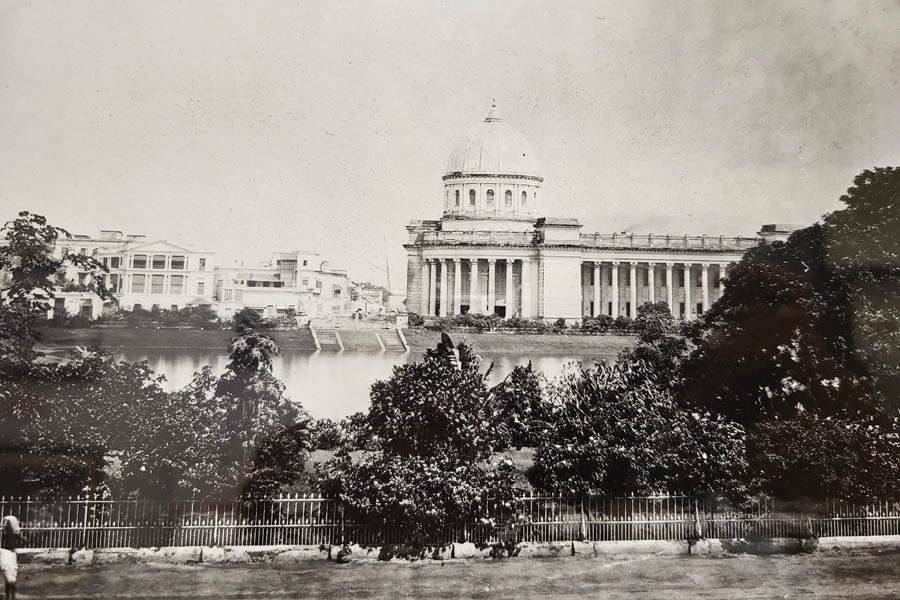
GPO before 1896 before the giant clock was installed Courtesy: British Library collections
In 1789, it moved to the house of Ms Eliza Fay somewhere near Church Street and from there, it moved to Chowringhee somewhere between where now the Whiteway Laidlaw building and the Indian museum stand. On June 1, 1807, it moved to Dalhousie Square at Bankshall Street. It was a building where one Mrs Stallkett used to run a school.
Unfortunately, most of these historical buildings are no more and many of the locations are not even traceable.
It was the time when the postal service was open to common people against prepayment of 2 anna per letter for every 100 miles.

The regal sartorial belts worn by the postmen in the British Raj era
This prepayment of postage was known as copper ticket, which was later converted into postage stamp. In the absence of postage stamp, a post mark was used to apply on letters then used to be known as ‘Indian Bishop Mark’. In 1781, for the first time, parcel movement service through the post office was introduced. It was one of the earliest parcel services in the world.
The postal service of British India was soon introduced in Madras in 1778 followed by Bombay in 1792.
In 1793, Lord Cornwallis introduced a Permanent Settlement system and that changed the economy of India almost overnight.
As soon as this system helped local zamindars to amass huge wealth, Lord Cornwallis shifted the responsibility of the postal system largely to the zamindars. It was the time we see a large-scale expansion of post offices and postal service by runners, who over the next 100 years or so would run night after night carrying bags full of innumerable letters, documents, currency etc from one post office to another post office by braving rain, heatwave, storms, tiger attacks, snake bites and even plundering by dacoits. The Indian postal system will always remain indebted to these runners who made the system run silently.
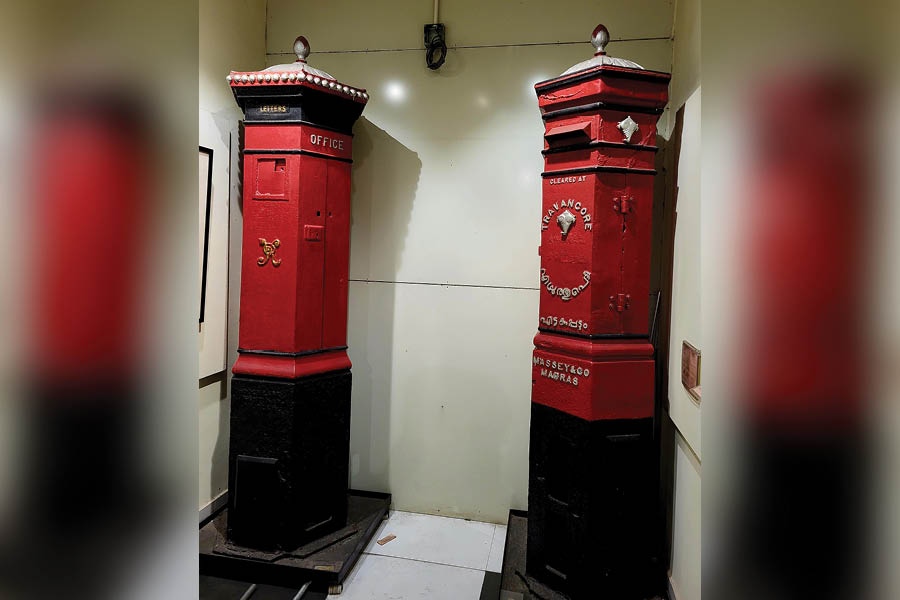
Old post boxes
The Post Office Act XVII -1837 came on July 24, 1837, and it covered all three presidencies namely Bengal, Bombay and Madras. From 1840, after some more reforms, postman or the delivery peon service was introduced and Calcutta was one of the first cities to enjoy it.
In 1850, during the time of Lord Dalhousie, a committee was formed and based on its report, the postal department teamed up with the Indian Railways to carry letters from the zone that comes under the Calcutta GPO.
A big reform in the postal system started after the passing of the Indian Post Office Act, 1854, which undertook the pan-India postal service under a newly created position called the director-general of post office (DGPO). The first DGPO of India was one Mr Riddle.
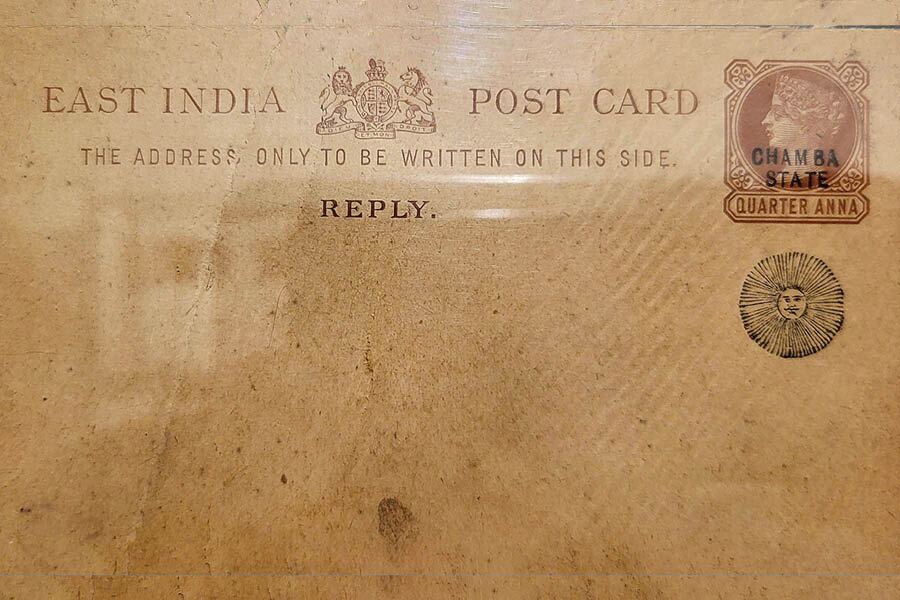
The first post card
First stamp is born in Calcutta
On September 15, 1854, India’s first postage stamp was introduced. It was designed by Captain HL Thuillier. It was in lithography which was engraved by an Indian named Muniruddin.
Calcutta is credited to have printed India’s first stamp on October 1, 1854, and also Asia’s first bi-colour stamp on October 15 the same year.
From 1855, a plethora of new postage stamps named ‘East India Postage’ were introduced in India, all printed by an organisation in London named De La Rue.
Here in Calcutta on March 6, 1897, India’s first Philatelic Society was formed. No doubt Calcutta GPO’s influence and contribution were huge behind it.
Registration mail service started from Calcutta in 1851 nearly a year after Bombay.
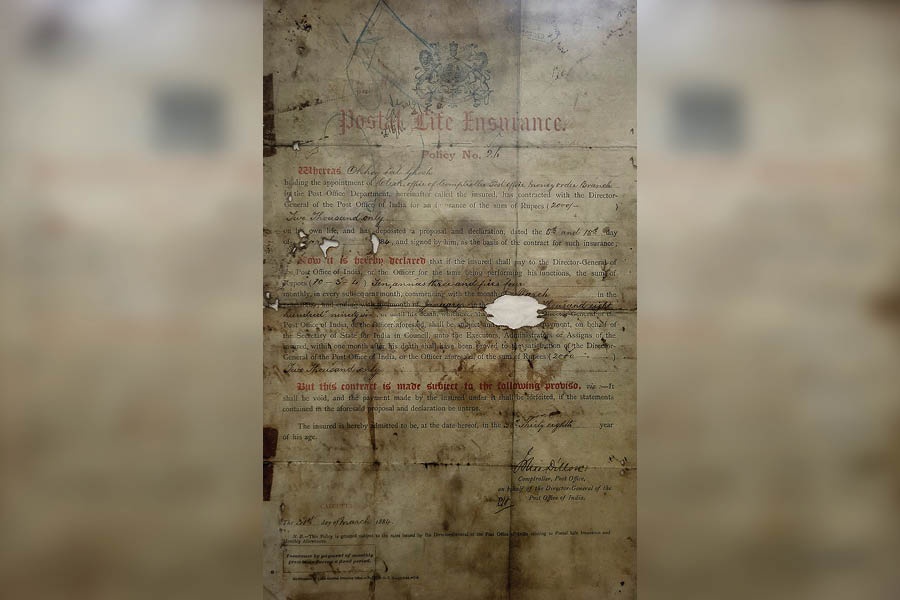
Life insurance issued by the postal department
As soon as India came under the direct fold of British Crown from the East India Company in 1858, the postal system saw a revolutionary change in its service and efficiency. It now became more people-friendly and apart from just an institution of delivering mails, it also started working as an insurance company (1884), money transferring medium (1880), telegraphic money transferring (1884), banker (1882), customs duty collector (1896) lender, financial deposit holder and from 1892, became a selling agent of essential medicines like quinine. In India, post office practically played role of bank for many people for many years in the absence of banking system, especially in rural areas.
In 1868, the present majestic GPO building came up and with it, the Dalhousie Square zone, which was by then started booming as one of the biggest functional hubs of trade and commerce in India, got a signature landmark. Though the area was already getting crowded with one after another outstandingly beautiful colonial buildings built by various insurance companies, commercial houses, banks, chamber of commerce, public institutes, hotels, administrative buildings etc but the exceptionally designed GPO was a stunning one.
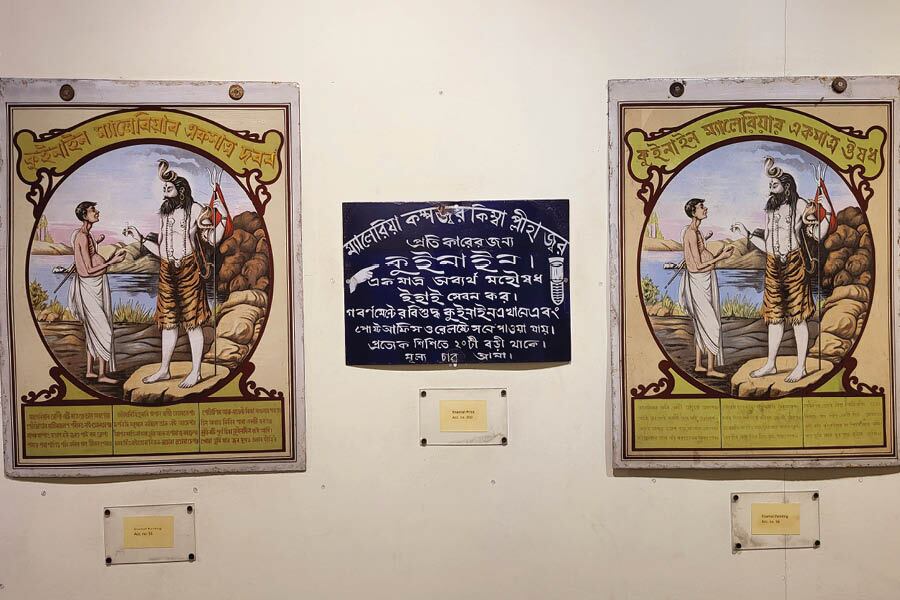
Quinine ad by the postal department
It was tough for the management to convince East India Company’s board of directors for the funds to build a new GPO and till India was under the East India Company, no fund was sanctioned for a new office building. In 1860, the ice was finally broken and a plot where once the old Fort William stood was allocated.
The architecture
As the location was prime and to make it a site of grand urban panorama Walter B Granville (1819-1874), the legendary architect, who had the credit of designing landmark Calcutta buildings like the Indian Museum, University of Calcutta’s Senate Hall and Memorial Church of Kanpur, was assigned the task. Work began in 1864 and the new building with its grand corner dome punctuated by rusticated pylons superbly supplemented by Corinthian colonnade was thrown open to the public on October 2, 1868.The central chamber rises to the full height of the building.
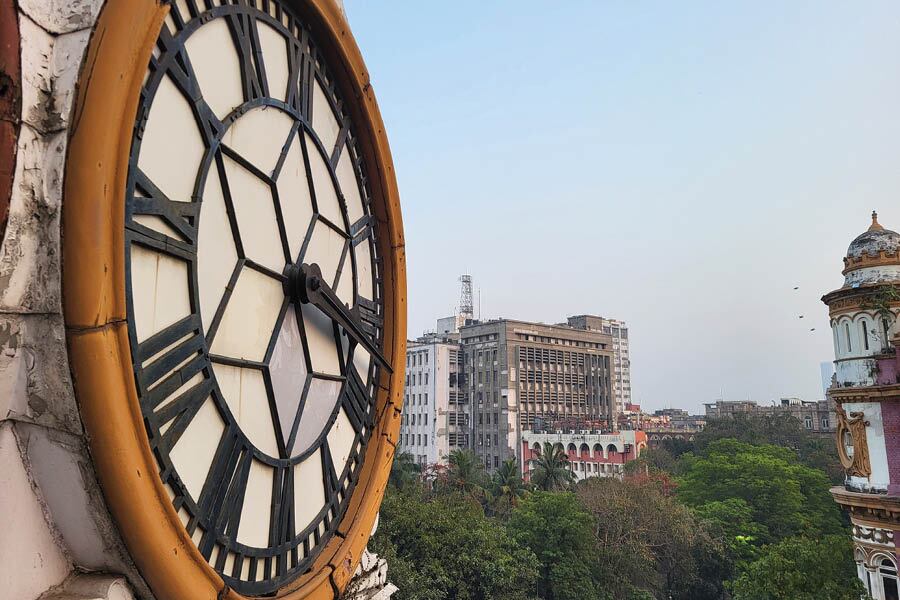
The grand GPO clock of 1896
The dome was equipped with excellent provision of natural lighting and ventilation system apt for an era when there was no electricity. The new GPO covered 48,184sqft of floor space. The cost incurred was Rs 6,30,000.
Later, in 1896, a clock was added at the cost of Rs 7,000. It was imported from London from the same manufacturer as the Big Ben of the British Parliament.
One hundred and fifty-six years after its opening as a public post office and also a central postal administrative building, Calcutta GPO is a living testimony and not a mere edifice. It is a modified form of the first post office that Hastings established in 1774 for common people and every single chapter of the Indian postal system in the last 250 years has its beginning and growth story inside of it.

The royal procession of Viceroy of India passing by the GPO in the early 20th century Courtesy: British Library collections

